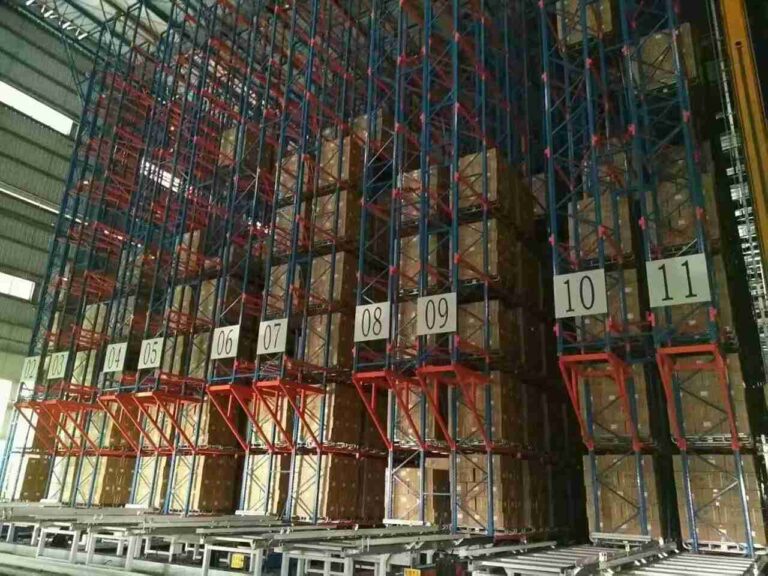📐 "First 50 Enterprise Queries Get Custom 3D Warehouse Design" Plan

Introduction: The Rising Demand for Semi-Automated Racking Solutions
In an era where warehouse efficiency directly impacts profitability, businesses are increasingly turning to semi-automated racking solutions to maximize storage capacity, reduce labor costs, and enhance operational speed. Unlike fully automated systems, which require massive capital investment, or manual racking, which is labor-intensive and error-prone, semi-automated racking solutions offer the perfect middle ground—delivering high performance at a reasonable cost.
This in-depth guide explores why semi-automated racking solutions are becoming the preferred choice for modern warehouses, distribution centers, and manufacturing facilities. From cost-benefit analysis to real-world case studies, this article provides actionable insights for logistics managers, warehouse operators, and business owners looking to optimize their storage infrastructure.

1. Understanding Semi-Automated Racking Solutions
1.1 What Are Semi-Automated Racking Solutions?
Semi-automated racking solutions integrate automated retrieval mechanisms with human oversight, creating a hybrid storage system that boosts efficiency without eliminating workforce flexibility. These systems use automated guided vehicles (AGVs), pallet shuttles, and motorized mobile racking to streamline operations while keeping installation and maintenance costs manageable.
1.2 How Semi-Automated Racking Solutions Compare to Other Systems
- Manual Racking: Relies on forklifts and manual labor, leading to higher error rates and slower throughput.
- Fully Automated Racking (AS/RS): Requires significant upfront investment and limited adaptability for changing inventory needs.
- Semi-Automated Racking Solutions: Provide a balanced approach, improving speed and accuracy while maintaining cost control.
2. Key Advantages of Semi-Automated Racking Solutions
2.1 Cost-Effective Warehouse Optimization
One of the biggest selling points of semi-automated racking solutions is their affordability compared to fully automated alternatives. Businesses can reduce labor expenses by 30-50% while avoiding the high capital costs of robotic automation.
2.2 Superior Space Utilization with High-Density Storage
By incorporating narrow-aisle designs, push-back racking, and vertical lift modules (VLMs), semi-automated racking solutions can increase storage capacity by up to 60% compared to traditional static shelving.
2.3 Enhanced Accuracy and Reduced Operational Errors
Automated components like RFID tracking and barcode scanning minimize human errors, ensuring near-perfect inventory accuracy—a critical factor for e-commerce fulfillment and just-in-time manufacturing.
2.4 Scalability for Growing Businesses
Unlike rigid fully automated systems, semi-automated racking solutions allow gradual expansion, making them ideal for businesses with fluctuating inventory demands.
3. Types of Semi-Automated Racking Solutions
3.1 Push-Back Racking Systems
- Uses gravity-fed rollers to store multiple pallets deep.
- Ideal for FIFO (First-In-First-Out) or LIFO (Last-In-First-Out) inventory management.
- Best suited for beverage distribution and cold storage warehouses.
3.2 Pallet Shuttle Systems
- Features removable electric shuttles that automate pallet movement within the rack.
- Reduces forklift dependency, improving safety and efficiency.
- Highly effective in high-throughput operations like retail distribution centers.
3.3 Mobile Racking (Motorized Adjustable Shelving)
- Motorized bases shift entire racking rows, maximizing floor space.
- Perfect for low-turnover inventory such as archival documents or seasonal products.
3.4 Vertical Lift Modules (VLMs)
- Automated vertical carousels retrieve items with minimal human intervention.
- Excellent for small parts storage in pharmaceuticals and electronics manufacturing.
4. How to Select the Best Semi-Automated Racking Solutions
4.1 Evaluating Warehouse Requirements
- Inventory turnover rate (high vs. low).
- SKU diversity (uniform vs. mixed sizes).
- Available floor space (narrow vs. wide aisles).
4.2 Budget and ROI Considerations
- Upfront investment vs. long-term savings.
- Maintenance costs (automated parts vs. manual labor).
4.3 Integration with Warehouse Management Systems (WMS)
- Compatibility with ERP and inventory tracking software.
- Training requirements for operational staff.
5. Real-World Success Stories with Semi-Automated Racking Solutions
5.1 E-Commerce Fulfillment Center Boosts Efficiency by 40%
A mid-sized online retailer implemented pallet shuttle systems, reducing order processing time and cutting labor costs by 35%.
5.2 Food & Beverage Warehouse Optimizes Cold Storage
A leading beverage distributor increased storage density by 50% using push-back racking, allowing faster restocking during peak seasons.
6. The Future of Semi-Automated Racking Solutions
6.1 AI and Predictive Analytics for Smarter Warehousing
- Machine learning algorithms optimize stock placement based on demand forecasting.
- Automated restocking alerts prevent out-of-stock scenarios.
6.2 IoT-Enabled Smart Racking for Real-Time Monitoring
- RFID and sensor-based tracking provides live inventory updates.
- Automated damage detection reduces product loss.
Conclusion: Are Semi-Automated Racking Solutions Right for Your Business?
Semi-automated racking solutions represent the ideal compromise between cost efficiency and high-performance warehousing. By reducing labor dependency, maximizing storage density, and improving accuracy, these systems are transforming modern logistics.
For businesses seeking a scalable, cost-effective storage solution that bridges the gap between manual and fully automated systems, semi-automated racking solutions offer unmatched flexibility and ROI.
Frequently Asked Questions (FAQs)
1. How much do semi-automated racking solutions cost compared to fully automated systems?
While fully automated systems can cost 50,000–$200,000, making them far more accessible.
2. Can semi-automated racking solutions work with existing forklifts?
Yes, many semi-automated racking solutions, such as push-back racking, are designed to integrate seamlessly with standard forklifts.
3. What industries benefit most from semi-automated racking solutions?
E-commerce, pharmaceuticals, food & beverage, and automotive logistics see the highest efficiency gains from these systems.
4. How long does it take to install semi-automated racking solutions?
Installation typically takes 2–8 weeks, depending on warehouse size and system complexity.
5. What maintenance is required for semi-automated racking solutions?
Regular lubrication of moving parts, software updates, and periodic inspections ensure long-term reliability.




